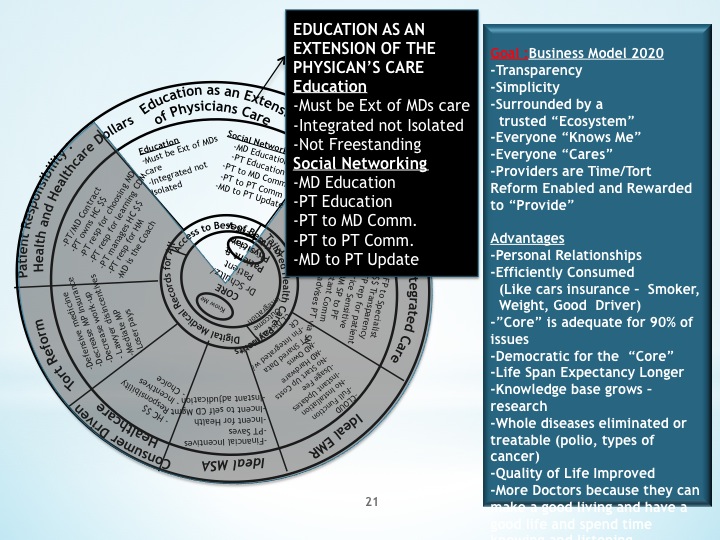Supreme Court and Healthcare
Stanley Feld M.D.,FACP,MACE
This week the Supreme Court is going to rule on whether President Obama’s Healthcare Reform Act is constitutional or not.
The traditional media and blogosphere has spent many hours speculating on the Supreme Court’s decision.
The Supreme Court probably recognizes the many strange issues involved in the passage of Obamacare and the many tricks President Obama played in its passage. It also recognizes than only 32% of the population approves of the plan.
The Supreme Court has cleverly picked the two most important issues dealing with the constitutionality of President Obama’s Healthcare Reform Act. These two issues are intermingled with the multitude of issues that are wrong with the law.
There are two key issues.
One key issue is whether it is constitutional for the central government to mandate that Americans and American companies must purchase healthcare insurance from a private healthcare insurance company. If Americans do not purchase the healthcare insurance, can the federal government fine them?
The second key issue is whether it is constitutional for the federal government to force states to increase the number of people eligible for Medicaid or do the states have the right to determine who they can and should cover at their expense.
The two core issues are freedom of individual choice and central government control over states rights. Does the federal government have the power under the constitution to limit these constitutional rights?
Once the constitutionality of these two issues are decided by the Supreme Court, Obamacare still has the healthcare system’s original dysfunctional problems.
Obamacare institutes none of the necessary rules or regulations to repair the healthcare system. It adds a patch onto a dysfunction healthcare system.
Effective repair of the healthcare system must be incentive driven with alignment of all of the stakeholders. The primary stakeholders are the patients and physicians. It must not be a system that is punitive to stakeholders.
The healthcare system must not be an entitlement program. It can be a subsidized program that is consumer owned and driven. Consumers must have financial incentive to be responsible for their health and healthcare dollars.
Any system that promotes government dependency will fail.
The list of initiatives that could repair the healthcare system is large. Obamacare does not include any of them.
Obamacare omits the need for patients’ responsibility, expands entitlements and promotes government dependency.
These are the initiatives that must be included in a healthcare system that will work:
- Eliminate defensive medicine by effective Tort Reform.
- Individual patients’ responsibility for their healthcare dollars using the Medical Saving Accounts.
- Individual patients must become responsible for their health. Obesity and the avoidance and control of chronic diseases and complications are in large measure the patient’s responsibility. Financial incentives for effective health along with educational programs to avoid chronic diseases and the complications of chronic diseases should be available.
- Dis-intermediate the healthcare insurance industry’s ability to extract 40% of every healthcare dollar for both public and private healthcare insurance sectors: Medical Savings Accounts.
- Eliminate the vague regulations and confusing regulations restricting innovative direct medical care programs.
- Make all healthcare insurance programs, corporate, small business and individual programs, tax deductible.
- Administrative waste is expanded in Obamacare. Over 250 new agencies have been created already.
- Effective system to implement Electronic Medical Records. The present stimulus is inadequate and will not achieve its goal. It can be done much less expensively.
- The hospital reimbursement system must be revised. The government should institute regulations that monitor transparent real costs of a service and transparent negotiated charges. This should be available to patients and physicians in order to make educated choices.
- The government should provide on-line information to patients and physicians about reimbursement for services and need for services based on evidence based medicine recommendations.
- The government should help patients save their own money by helping patients decide what are necessary diagnostic tests and treatment.
- It should be the patient’s decision and not the government’s decision on necessary treatment.
- Patient should be a Pro-sumer ( Productive Consumer). Patients must learn to be responsible for their care and healthcare decisions.
- The central government should stop trying to control the healthcare system and forcing consumers to be dependent on government. This is the Road To Serfdom.
- The government should streamline regulations, eliminate paperwork, and make the healthcare system interaction a pleasant one.
- The government should eliminate bureaucracy. The government must approach healthcare reform from the patients’ and physicians’ point of view.
There are many more initiatives I could list that are needed to the repair of the healthcare system. All the initiatives are based on maintaining individual freedoms and promoting individual responsibilities. The initiatives are not based on forcing everyone to be dependent on government.
These are exactly the problems the Supreme Court is considering.
As a society we have been acculturated to accept an entitlement society and central government dependency.
We are also noticing that entitlement societies do not work as witnessed by European socialism.
America is in a Catch 22 situation. If you want to be fiscally responsible you cannot live beyond your means. America cannot maintain the entitlements any longer because the central government cannot afford them.
After a finite time a nation runs out of other peoples’ money.
The opinions expressed in the blog “Repairing The Healthcare System” are, mine and mine alone
Please have a friend subscribe



Thanks , I have just been searching for information about this topic for ages and yours is the greatest I’ve discovered till now. However, what concerning the bottom line? Are you sure about the source?